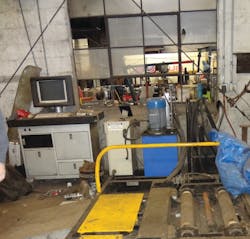EVOC: Computer-Based Diagnostics For Fire Apparatus Safety
When I was conducting an emergency vehicle operations class in Canada, I found a fire department that takes its apparatus to a local heavy-duty truck dealer every year to be evaluated by a computer system that measures vehicle safety factors. The system is being used by heavy-duty truck shops around the world as a diagnostics tool to check braking systems, weight distribution and handling characteristics for large trucks.
The evaluation is centered on a computer-based system called Vis-Check. I wanted to learn more and found that its U.S.-based distribution center is in Orlando, FL. One phone call later and I found that a long-time, well-respected heavy-duty truck brake-and-spring facility has the closest of these systems to my home, so I took a trip to Newburgh, NY, to McDonald & McDonald Inc. to learn more about it.
I met with Tom McDonald, the company’s president, who gave me a tour of his facility and an education on Vis-Check. McDonald said his machine is about eight years old and its technology was designed and built in Australia for the Australian large truck combinations called “road trains.” These are large tractor-trailer combinations that have one tractor pulling as many as four or five full-size trailers and the brakes on the last axle on the last trailer must activate first. This technology was used to calibrate brake systems in conjunction with the weight to bring such a large vehicle to a safe stop.
The cost for the machine was $115,000 when it was new. McDonald & McDonald charges $95 for a single-axle truck and $125 for a tandem-axle truck. For McDonald & McDonald, the system is used primarily as a diagnostics tool for brakes, king pins, wheel bearings, motor mounts, frame crossmembers and handling problems. It is intended as a tool to reduce liability as important operating systems on an apparatus are checked and a digital computer-generated report is delivered to the fire department. Systems checked are maximum rolling resistance, maximum brake force, brake balance, maximum deceleration, weight, parking brake force (maxi-brake), rolling resistance ratio, parking brake deceleration and weight balance. Each axle is measured independently and these values as well as values measured on each wheel on each axle are recorded, and then a total of those values are also noted in the report. Also included in the report is a graph showing braking efficiency.
The system requires two trained operators. One operates the hydraulic pump and computer and the other drives the apparatus onto rollers. The driver must then operate the truck on the rollers at a low speed (drive axle). Two rollers check braking efficiency. Plates are used to shake the truck, which checks the king pins, wheel bearings, motor mounts and frame crossmembers. About an hour is needed to check each apparatus.
• • •
The FDNY is retrofitting the entire apparatus fleet with a new seatbelt system designed by firefighters for firefighters to accommodate bunker gear. I will report on this history-making event in my next column.
